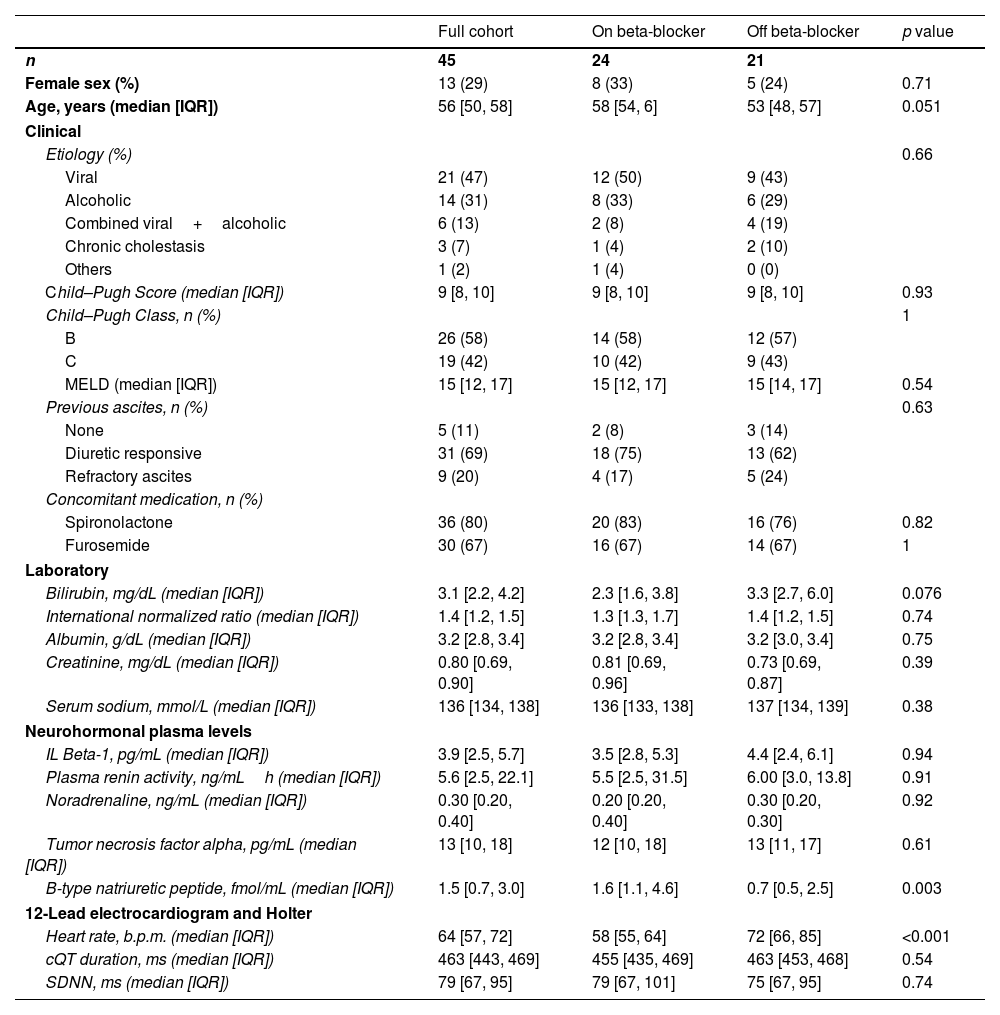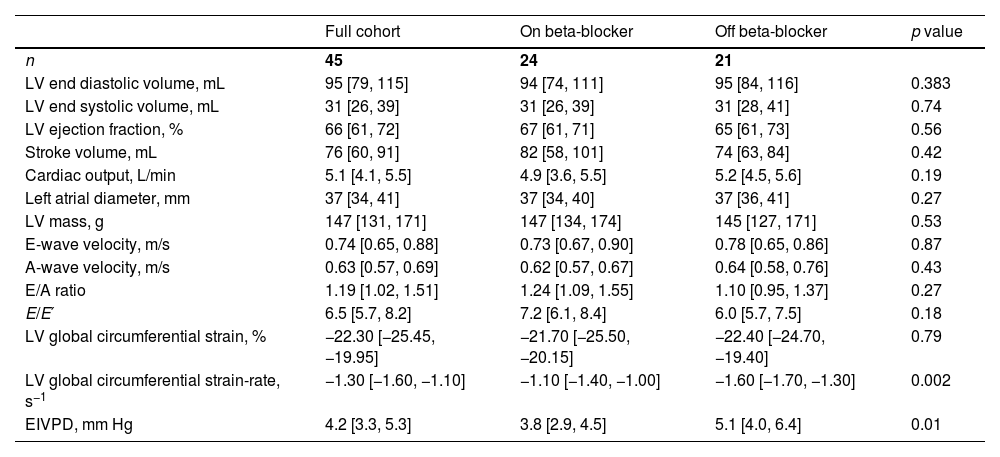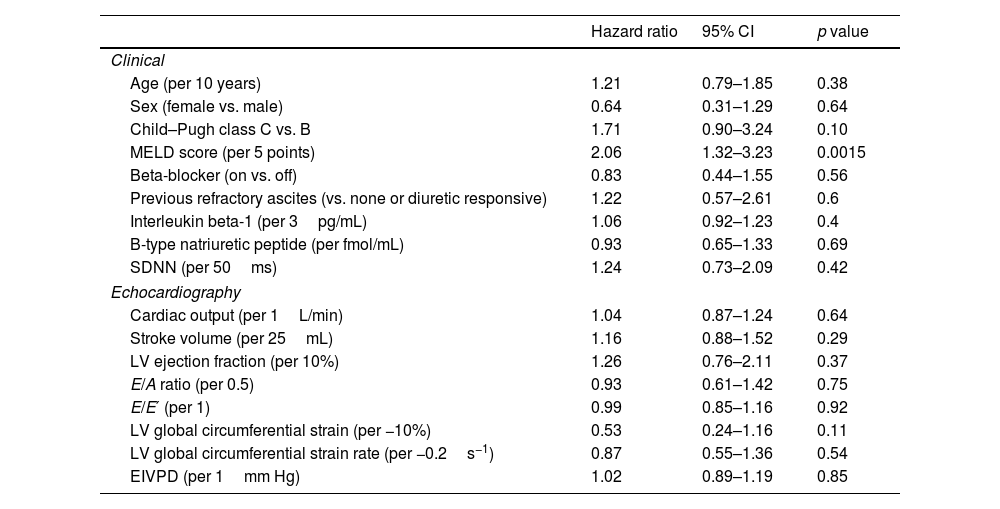LV intrinsic systolic cardiac function in cirrhotic patients is conditioned by the degree of sympathetic activation and the use of non-selective beta-blockers (NSBBs). Systolic function can be non-invasively measured by ultrasound using Ejection Intraventricular Pressure Differences in the LV (EIVPD). We aimed to address the relationship between systolic function and long-term clinical outcomes using EIVPD.
MethodsWe studied 45 Child–Pugh B or C patients (13 female, 24 on NSBBs) using echocardiography. The primary endpoint was the combination of any-cause mortality or liver transplantation. After a follow-up of 7 years (796 person-months) and a median period of 17 (10–42) months, 41 patients (91%) reached the primary endpoint: 13 (29%) died and 28 (62%) underwent transplantation.
ResultsBy univariable analysis the primary endpoint was related exclusively to MELD score. However, in a multivariable proportional-hazards analysis, adjusted for age, sex and MELD score, EIVPD was inversely related to the primary endpoint, showing interaction with NSBBs. In patients without NSBBs, EIVPD inversely predicted the primary endpoint, whereas in patients with NSBBs, EIVPD was unrelated to outcomes. These relationships were undetected by myocardial strain or conventional cardiac indices.
ConclusionsLV intrinsic systolic function, as noninvasively measured by EIVPD is a predictor of long-term outcomes in patients with cirrhosis. The prognostic value of EIVPD is present along any degree of liver dysfunction but blunted by NSBBs. Because NSBBs have a deep effect on myocardial contractility, these drugs need to be considered when assessing the prognostic implications of cardiac function in these patients.
La función sistólica del ventrículo izquierdo (FSVI) en la cirrosis, está condicionada por la activación simpática y por el uso de betabloqueantes (BBNCS). El gradiente de presión de eyección intraventricular (GPEIV) es un procedimiento ecocardiográfico para la medida precisa de la FSVI. El objetivo del estudio fue evaluar la relación entre la FSVI medida con GPEIV y la evolución de la cirrosis.
MétodosSe estudiaron 45 pacientes Child-Pugh B o C (13 mujeres, 24 con BBNCS) mediante ecocardiograma. La variable principal fue la mortalidad de cualquier causa o el trasplante hepático. Tras un seguimiento de 7 años (796 meses-persona) y una mediana de 17 (10-42) meses, 41 pacientes (91%) alcanzaron el evento primario: 13 (29%) éxitus y 28 (62%) trasplante.
ResultadosEn el análisis univariante, solamente el MELD se asoció al evento principal. En el análisis multivariante de riesgos proporcionales, ajustado por edad, sexo y MELD, el GPEIV presentó una relación inversa con el evento principal, demostrándose una interacción significativa con la toma de BBNCS.
En pacientes sin BBNCS, el GPEIV predijo el evento principal, mientras que en pacientes con BBNCS, el GPEIV no se asoció con la evolución. Esta relación no fue detectada utilizando otros índices convencionales de función sistólica o el “strain” miocárdico.
ConclusiónLa FSVI, medida por el GPEIV se asocia a eventos a largo plazo en la cirrosis avanzada. El valor pronóstico del GPEIV está enmascarado por la toma de BBNCS. Considerando el efecto de los BBNCS en la FSVI, éstos deben ser considerados cuando se analicen las implicaciones pronósticas de la función cardiaca en la cirrosis.












